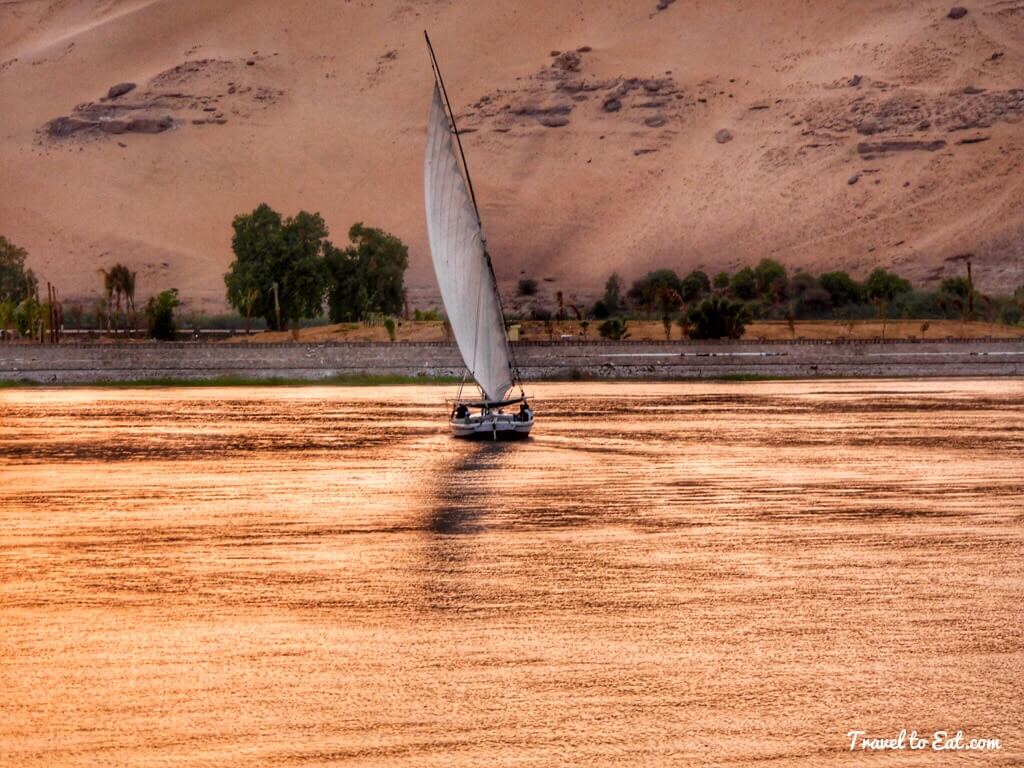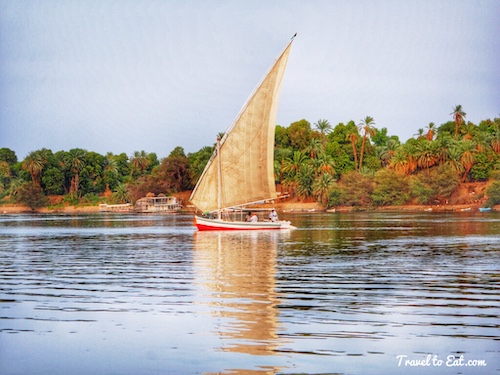
For nearly as long as I remember I have wanted to go sailing on the Nile river. I have done some sailing in the past and I find it to be both relaxing and a way to get a different perspective on any place bordering a body of water. In the case of Aswan, and in fact in all of Egypt, the Nile is not just a river, it is the artery carrying the lifeblood of the nation and virtually all life revolves around it. The sailboat shown above is called a felucca, a traditional wooden sailing boat used in the protected waters of the Red Sea and eastern Mediterranean including Malta, and particularly along the Nile in Egypt, Sudan, and also in Iraq. They are usually able to hold ten passengers and the crew consists of two or three people. The felucca has remained, over the centuries, the primary transportation of the Nile. Its ancient form still graces the river as it has done since the time of the Pharaohs. Motorized barges transport bulk material and modern cruise ships transport tourists, but the felucca remains despite modern alternatives. The felucca rarely has any form of engine and relies entirely on the breeze which builds during the day and usually subsides at night, and the Nile River’s current. Egypt is blessed with a predominant southerly wind that pushes sailboats upriver, while allowing them to return on its current downstream.
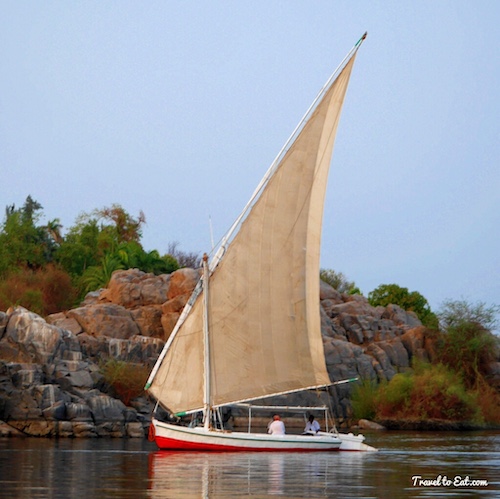
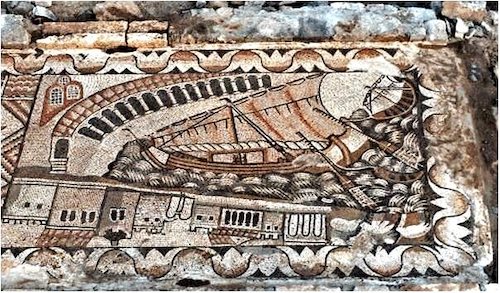
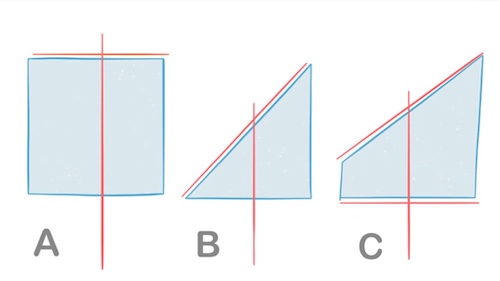
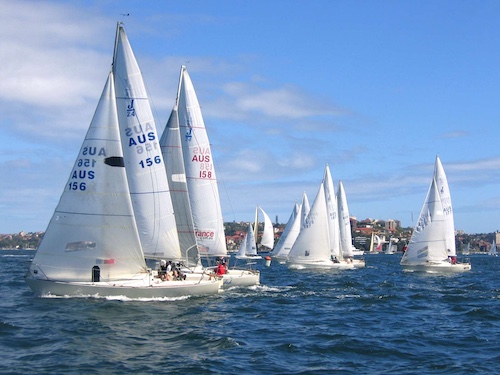
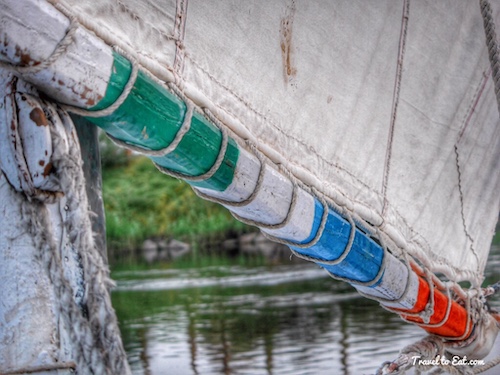
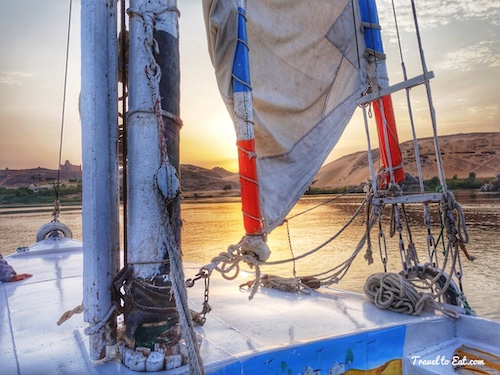
The settee sail, used on the felucca, is a lateen (triangular) sail with the front corner cut off, giving it a quadrilateral shape. It can be traced back to Greco-Roman developments in shipbuilding in the Mediterranean in late antiquity, probably in the first or second century BC. Evidence of the settee sail comes from a fourth century shipwreck in Yassi Ada (an island off the coast of Bodrum in Turkey) and late fifth century AD ship mosaic at Kelenderis, on the southern coast of Turkey (both in Cilicia in antiquity). This has historically been the standard rig for the graceful Nile feluccas and Arab Dhows. The “V”-shaped and mastless lateen rig, known as crab claw sail, of the seafaring Polynesians, is generally assumed to be an independent invention on the grounds of its very different construction. The settee sail requires a shorter yard (the horizontal poles) and mast than does the lateen, and both settee and lateen have shorter masts than square-rigged sails. Both the lateen and settee sail rise better towards the wind and are far more maneuverable. In its most basic form, it requires only two lines, a halyard (to raise and lower the sail) and a sheet (to control the position of the sail), making it very simple to operate. These developments eventually led to the Bermuda rigging of modern sailboats.
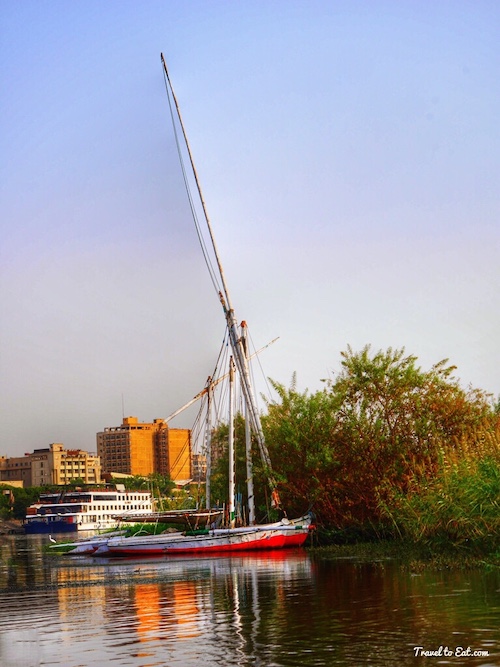
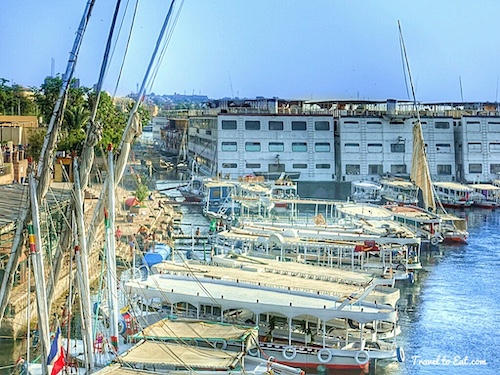
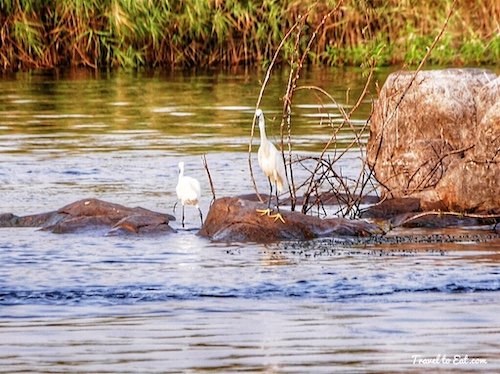
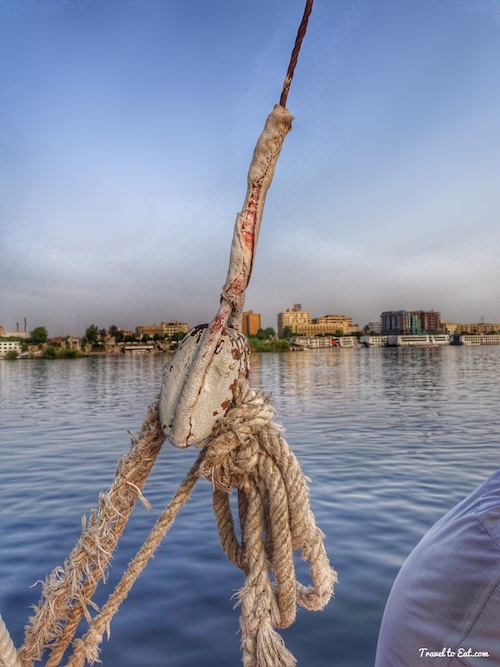
These sailboats remind me of ungainly enormous birds at rest at the dock or riverside, like flamingos or the ubiquitous little egrets with yellow feet seen all along the Nile. Their enormous sails are tucked haphazardly between the spars with frayed ropes and it seems unlikely they could sail or in fact move. But once in motion on the Nile, everything seems to come together, the slightest breeze propels them forward in a a silent and beautiful flight around the still waters of the Nile. Surprisely, because it is so wide, the Nile feels more like a lake than a river, although the shallow draft of these sailboats probably assists in their movements.
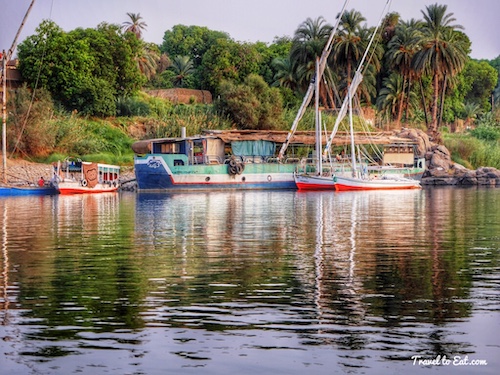
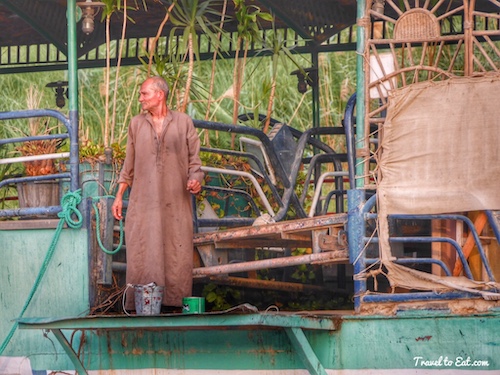
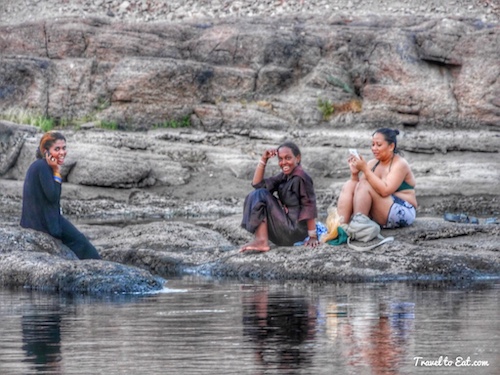
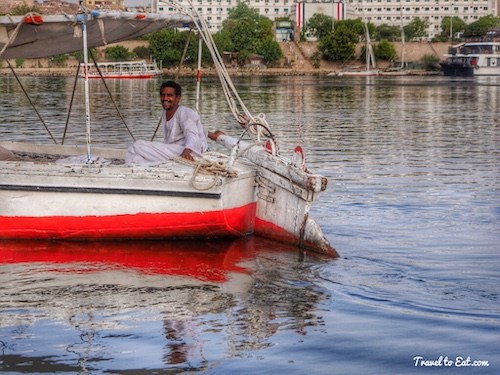
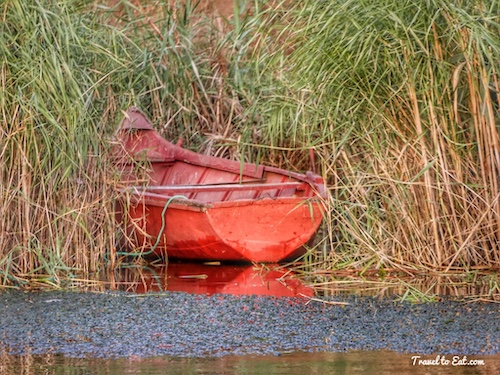
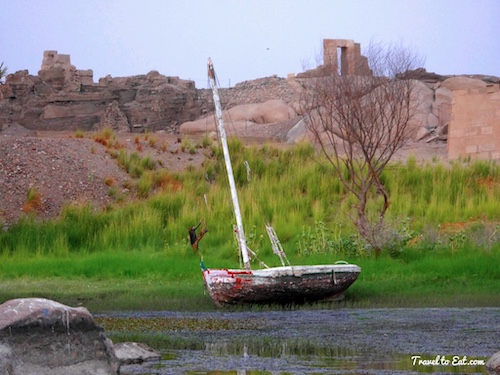
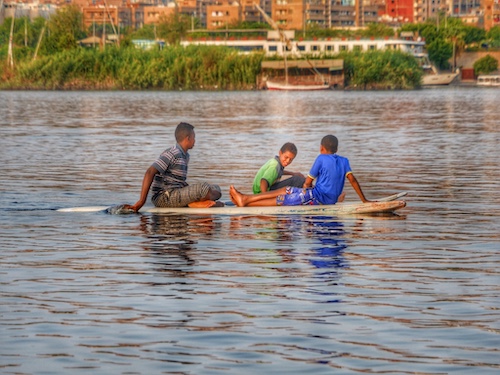
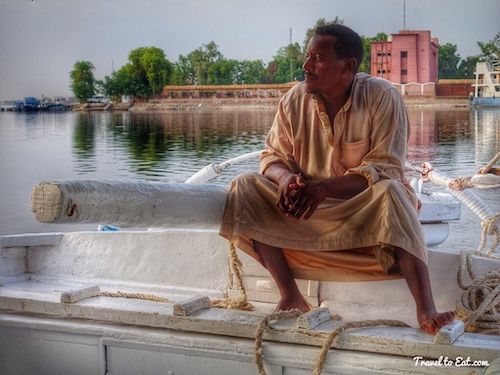
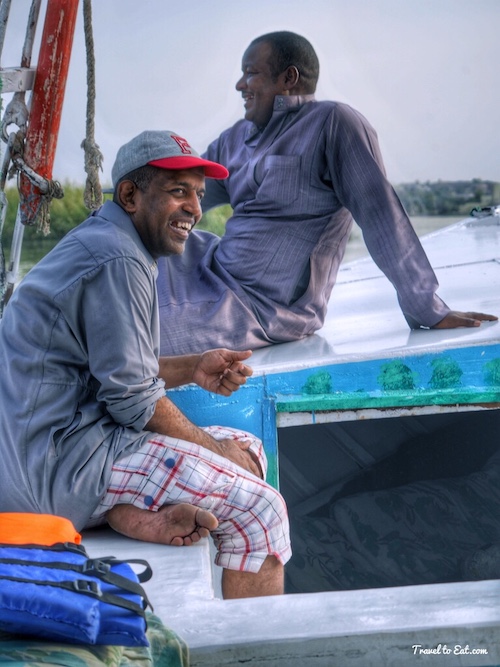
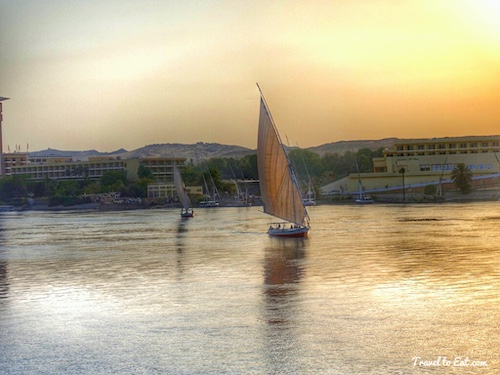
At midday in Aswan the heat is enough to melt your eyebrows. But as evening approaches, the city comes to life. Particularly on and near the Nile, the water provides a respite from the heat and friends congregate on the shores, and for those with a boat, set out on the water. Along the shores, evidence of the importance of rivercraft is everywhere, from the boxy Nile floating hotel barges to motorized tour boats, rowboats, surfboards and abandoned boats undergoing a slow and elegant decay. Some people have decided to live in the larger abandoned boats leaving the exterior and interior to continue their natural decay, giving the whole scene a sort of timeless quality. Out on our felucca the experience was surreally quiet and serene. For those of you who have never sailed, once you are underway you mainly just wait for the next turn, which in the case of the wide Nile with just a whisper of wind, leaves time to chat, look around and relax. Our expert crew was Nubian, many or most of the feluccas are manned by the many Nubian villages scattered around the islands of Aswan, displaced by the Aswan dam and resettled here. In the past, with more tourists, there were many more feluccas on the water while today we virtually had the river to ourselves.
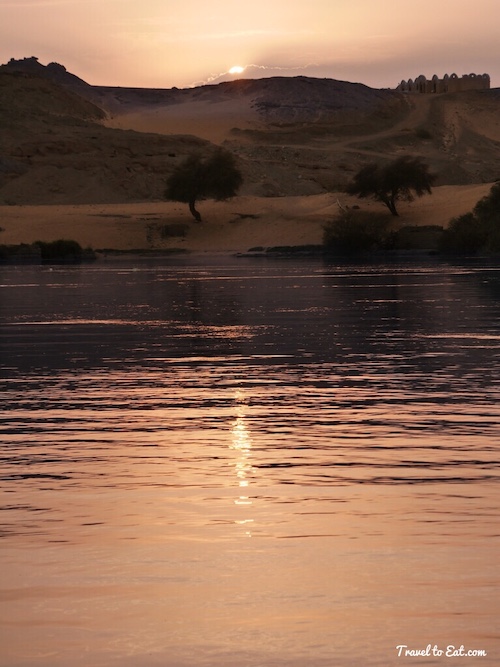
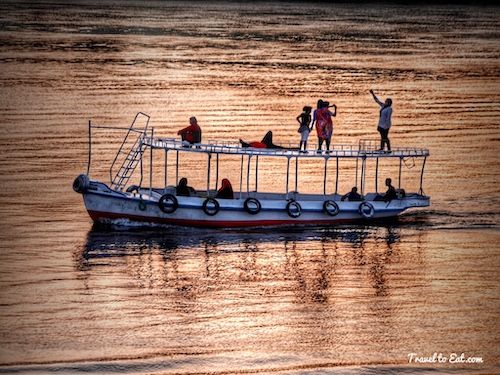
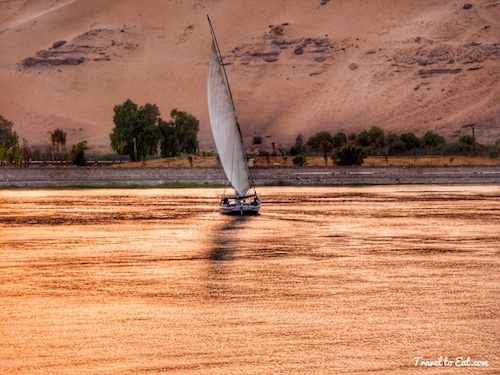
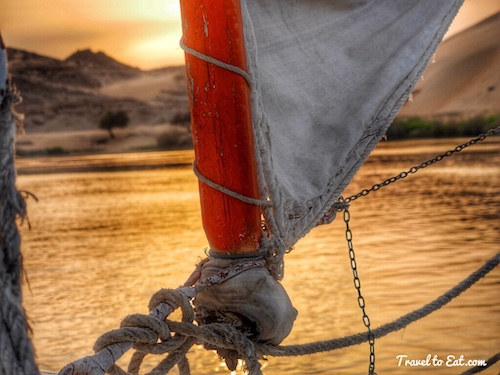
As the evening progressed, sunset inevitably brought us to our destination, a Nubian village where we were having dinner. The surface of the water turned to a breathtaking gold and the views became even more magical.
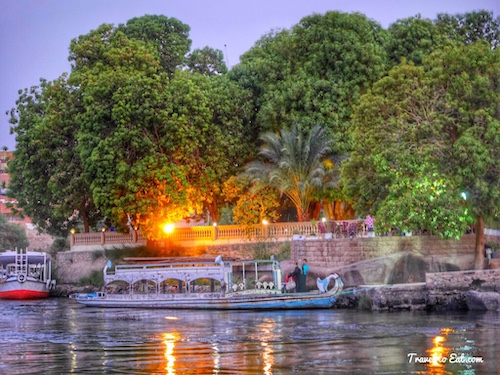
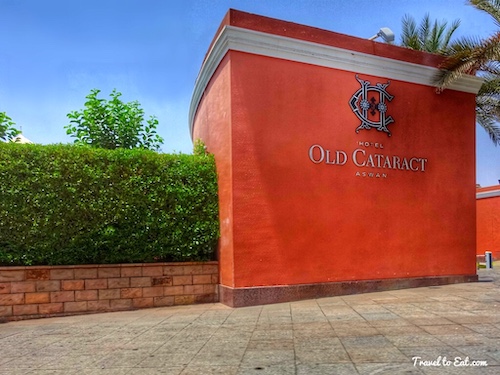
Just before we docked, we passed the five star Old Cataract Hotel, made famous by Agatha Christie. The hotel was built in 1899 by Thomas Cook to house European travelers. Its guests have included Tsar Nicholas II, Winston Churchill, Howard Carter, Margaret Thatcher, Jimmy Carter, Princess Diana, Queen Noor and Agatha Christie, who set portions of her novel Death on the Nile at the hotel. The 1978 film of the novel was shot at the hotel. I must say, sailing on the Nile was everything I had hoped for and exceeded my expectations. If you come to Egypt, or particularly Aswan, you should do this yourself, they even have overnight tours and there are plenty of feluccas to choose from.
References:
Fourth Century Shipwreck at Yassi Ada: http://www.jstor.org/stable/503679?seq=1#page_scan_tab_contents
Kelenderis Mosaic: http://www.todayszaman.com/national_kelenderis-mosaic-reveals-secrets-of-ancient-anatolia_116569.html
Kelenderis Sail: http://onlinelibrary.wiley.com/doi/10.1111/j.1095-9270.2006.00111.x/abstract
Byzantine Ships of Yenikapi: http://benedante.blogspot.com/2015/01/the-ships-of-yenikapi.html
Old Cataract Hotel: http://www.sofitel-legend.com/aswan/en/
Death on the Nile: http://www.amazon.com/Death-Nile-Hercule-Mystery-Mysteries/dp/0062073559

